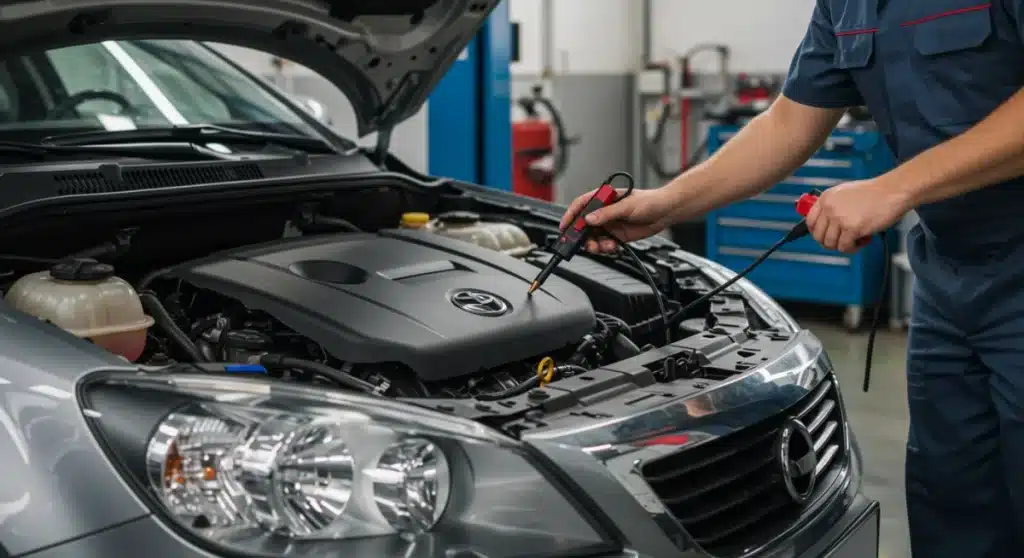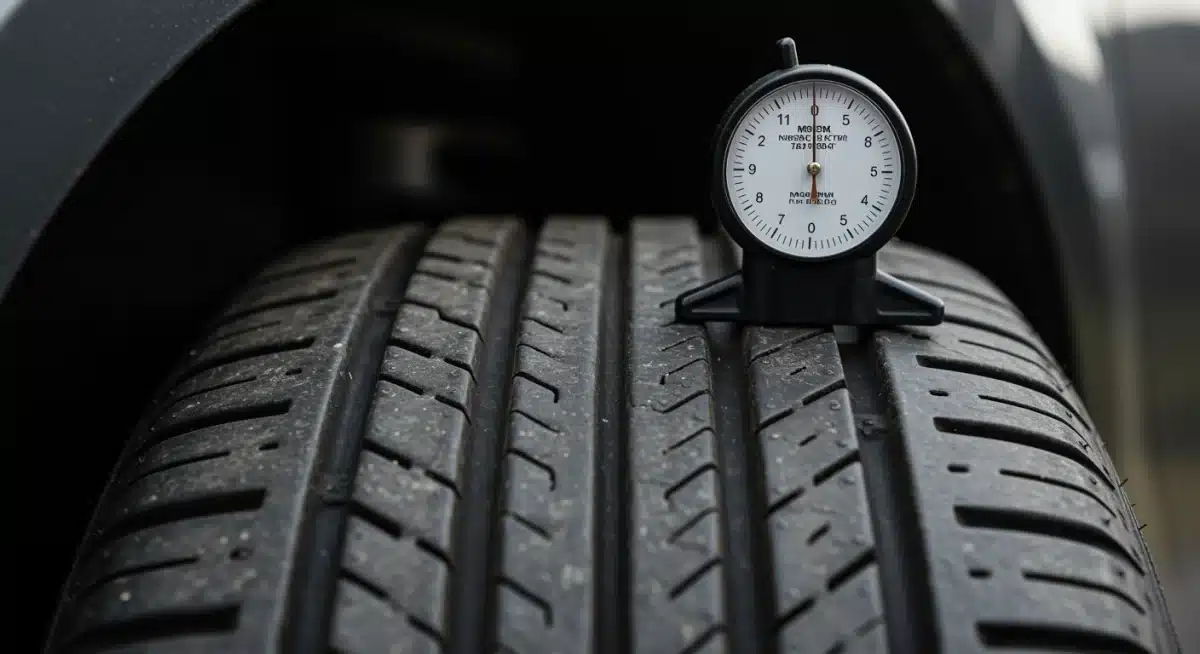Pre-Purchase Inspections in 2025: Your Used Car Checklist

A comprehensive pre-purchase inspection in 2025 is vital for used car buyers to uncover hidden issues, assess vehicle condition accurately, and prevent costly post-purchase regrets.
Buying a used car can be an exciting yet daunting experience, particularly when navigating the complexities of the 2025 automotive market. To safeguard your investment and ensure peace of mind, a thorough pre-purchase inspection in 2025 is not just recommended, it’s essential. This guide will walk you through a step-by-step checklist, designed to help you identify potential issues and avoid the ten most common used car pitfalls.
Understanding the Importance of a Pre-Purchase Inspection
In today’s dynamic used car market, vehicles often come with a history that isn’t always fully disclosed. A pre-purchase inspection (PPI) serves as your independent assessment, providing an unbiased overview of the vehicle’s true condition. This professional evaluation goes far beyond a simple test drive, delving into mechanical, structural, and electronic components that might not be immediately apparent to the untrained eye.
The value of a PPI extends beyond simply identifying problems; it empowers you with crucial information that can influence your purchasing decision and even strengthen your negotiation position. Knowing the exact state of the vehicle allows you to make an informed choice, preventing you from inheriting costly repairs or safety hazards down the line. It’s a small investment that can save you thousands in the long run.
Why a PPI is Non-Negotiable
Even if a seller provides a vehicle history report, such as a CARFAX or AutoCheck, these reports primarily focus on documented events like accidents or title issues. They don’t typically detail the current mechanical health of the vehicle. A PPI fills this critical gap, offering a real-time snapshot of the car’s condition. This is especially pertinent in 2025, with increasingly complex vehicle technologies.
- Uncover hidden damage: Mechanics can spot frame damage, rust, or previous repairs not reported.
- Assess mechanical health: Engine, transmission, brakes, and suspension are thoroughly checked.
- Identify electrical issues: Modern cars rely heavily on electronics; a PPI can detect faults.
- Verify maintenance history: A professional can often tell if maintenance has been neglected.
Ultimately, understanding the importance of a PPI is the first and most critical step in securing a reliable used car. It transforms an uncertain purchase into a confident transaction, arming you with the knowledge needed to proceed wisely.
Choosing the Right Inspector: Expertise Matters
Selecting a qualified and trustworthy inspector is paramount to the success of your pre-purchase inspection. Not all mechanics are created equal, and for a PPI, you need someone with specific expertise in diagnosing potential issues in used vehicles. Ideally, the inspector should be an independent third party, meaning they have no affiliation with the seller or dealership, ensuring an unbiased assessment.
Look for certified mechanics, preferably those with experience working on the specific make and model you are considering. Their familiarity with common problems associated with that vehicle type can prove invaluable. A reputable inspector will also utilize advanced diagnostic tools and possess a keen eye for detail, scrutinizing every aspect of the car.
Key Considerations for Inspector Selection
When you’re entrusting someone with evaluating a significant purchase, their credentials and approach matter. Don’t hesitate to ask about their experience, certifications, and what their inspection process entails. Transparency is key, and a good inspector will be happy to answer all your questions.
- ASE Certification: Look for Automotive Service Excellence (ASE) certified technicians.
- Specialized experience: Prioritize mechanics familiar with the car’s brand or type (e.g., European luxury, Japanese SUVs).
- Independent shop: Avoid shops affiliated with the seller to prevent conflicts of interest.
- Comprehensive report: Ensure they provide a detailed, written report with findings and recommendations.
The right inspector acts as your advocate, providing the technical insights you need to make an informed decision. Their expertise is a critical layer of protection against unexpected problems after purchase.
The Exterior and Underbody Inspection: First Impressions and Hidden Truths
The exterior of a used car can tell a story, but only if you know how to read it. Beyond aesthetics, the exterior and underbody inspection is crucial for identifying signs of accidents, rust, poor repairs, or structural damage that could compromise the vehicle’s safety and longevity. This initial visual assessment, often conducted before the car is even lifted, sets the stage for deeper mechanical checks.
Look for inconsistencies in paint color or texture, which can indicate previous bodywork. Check panel gaps to ensure they are even; uneven gaps might signal frame damage or poorly installed replacement parts. The underbody, though often overlooked, is a treasure trove of information, revealing potential leaks, rust, and suspension issues.
Detailed Exterior and Underbody Checklist
A thorough inspection of these areas requires attention to detail. Don’t be afraid to get a little dirty, or better yet, ensure your chosen mechanic is meticulous in their examination.
- Body panels and paint: Check for dents, scratches, rust, and paint inconsistencies.
- Frame damage: Look for buckling, welds, or bent components under the car.
- Tires and wheels: Inspect tread depth, uneven wear, alignment, and wheel damage.
- Suspension components: Examine shocks, struts, and springs for leaks or damage.
- Exhaust system: Check for rust, holes, or loose components.
- Fluid leaks: Look for drips or stains under the vehicle.

The exterior and underbody inspection provides the first critical clues about a car’s past. Any red flags here warrant further investigation and could be indicators of more significant underlying problems.
Interior and Electrical System Check: Comfort and Functionality
The car’s interior is where you’ll spend most of your time, so its condition directly impacts your comfort and overall ownership experience. Beyond superficial cleanliness, the interior and electrical system check focuses on the functionality of all controls, comfort features, and safety systems. Modern vehicles are packed with electronics, making this a critical area to scrutinize during a used car inspection 2025.
Test every button, switch, and dial. Ensure the air conditioning blows cold, the heater works, and all power windows and locks operate smoothly. The infotainment system, navigation, and Bluetooth connectivity should all be fully functional. Don’t forget to check the condition of seats, carpets, and headliner for excessive wear, tears, or unusual odors, which could indicate water damage or neglect.
Essential Interior and Electrical Components to Test
This part of the inspection is largely hands-on for the buyer, but a professional PPI will also use diagnostic tools to check the car’s computer for fault codes that might not trigger a dashboard warning light.
- Dashboard warning lights: Ensure all lights illuminate upon ignition and then turn off.
- HVAC system: Test AC, heat, and fan speeds.
- Power features: Windows, locks, mirrors, seats, sunroof, and trunk release.
- Infotainment and navigation: Verify all functions, including sound quality.
- Lighting: Headlights (high/low), tail lights, brake lights, turn signals, and interior lights.
- Safety systems: Test airbags (if safe to do so, or check indicators), seatbelts, and horn.
A fully functional interior and electrical system contribute significantly to both the enjoyment and safety of your used car. Addressing any issues here before purchase can save you from daily frustrations and unexpected repair costs.
Engine and Drivetrain Assessment: The Heart of the Vehicle
The engine and drivetrain are the most complex and expensive components of any vehicle, making their assessment a cornerstone of the pre-purchase inspection. A thorough examination here can reveal whether the car has been properly maintained or if it’s a ticking time bomb waiting to explode your budget. This goes beyond just looking under the hood; it involves listening, feeling, and often using specialized diagnostic equipment.
A qualified mechanic will check for fluid leaks, inspect belts and hoses for wear, and examine the engine for any unusual noises or vibrations. The transmission, often overlooked, is equally vital; a smooth gear change and absence of slipping are good indicators of its health. Any sign of smoke from the exhaust, unusual odors, or sluggish performance during a test drive should immediately raise red flags.
Critical Engine and Drivetrain Checks
This is where the expertise of a professional inspector truly shines. They can interpret what they see and hear, often identifying problems that an average buyer would miss entirely.
- Fluid levels and condition: Oil, coolant, brake fluid, power steering fluid, and transmission fluid.
- Belts and hoses: Check for cracks, fraying, or leaks.
- Engine noise and vibrations: Listen for knocking, ticking, or grinding sounds.
- Transmission operation: Smooth shifts, no slipping or harsh engagement.
- Exhaust smoke: Blue (oil), white (coolant), or black (fuel-rich) smoke indicates issues.
- Diagnostic codes: Scan the car’s computer for stored fault codes.
Ensuring the engine and drivetrain are in sound condition is paramount. This assessment can prevent you from purchasing a vehicle that requires immediate, significant, and often expensive mechanical overhauls.
Road Test and Documentation Review: Final Verifications
While a static inspection covers many crucial aspects, a comprehensive road test is indispensable for evaluating how the vehicle performs under real-world conditions. This is your opportunity to feel the car’s handling, braking, acceleration, and listen for any noises that only emerge when the car is in motion. The road test, ideally conducted by both you and the independent mechanic, should cover various speeds and road types.
During the road test, pay close attention to the steering for any pulling or looseness, the brakes for shuddering or excessive pedal travel, and the transmission for smooth shifts. Listen for any unusual clunks, squeaks, or rattles that might indicate suspension or exhaust issues. After the road test, a thorough review of the vehicle’s documentation completes the pre-purchase inspection process.
Road Test and Documentation Checklist
The documentation review is often the final piece of the puzzle, verifying the car’s history and legal standing. This includes checking the title, service records, and any warranty information.
- Steering and alignment: Vehicle should track straight without pulling.
- Brakes: Smooth stopping, no grinding or pulsation.
- Engine performance: Adequate acceleration, no hesitation or misfires.
- Transmission shifting: Seamless upshifts and downshifts.
- Suspension comfort: Absorbs bumps without excessive harshness or bounciness.
- Title and registration: Verify clear title, no liens, and current registration.
- Service records: Look for consistent maintenance and major repairs.
The road test and documentation review provide the final layers of assurance, confirming that the vehicle drives as it should and that its history aligns with what’s been presented. Together, these steps culminate in a truly comprehensive pre-purchase assessment.
| Key Inspection Area | What to Check For |
|---|---|
| Exterior & Underbody | Signs of accident damage, rust, uneven panel gaps, tire wear. |
| Interior & Electrical | Functionality of all controls, lights, HVAC, and infotainment system. |
| Engine & Drivetrain | Leaks, unusual noises, fluid condition, smooth transmission shifts. |
| Road Test & Docs | Vehicle handling, braking, acceleration, and verifying ownership records. |
Frequently Asked Questions About Pre-Purchase Inspections
The cost of a PPI can vary significantly depending on the region, the type of vehicle, and the depth of the inspection. Generally, you can expect to pay anywhere from $100 to $250 for a thorough inspection. While it might seem like an extra expense, it’s a small price to pay to avoid potentially thousands in future repairs.
A detailed PPI typically takes between one to two hours to complete. This timeframe allows the mechanic to meticulously examine all the critical components, perform diagnostic scans, and conduct a road test. Rushing the process could lead to overlooked issues, so ensure your chosen inspector allocates sufficient time.
While a PPI significantly reduces the risk of buying a problematic used car, no inspection can guarantee a vehicle will be entirely trouble-free forever. It provides a snapshot of the car’s condition at the time of inspection. Unexpected issues can still arise, but a PPI minimizes the chances of immediate, major, and unforeseen expenses.
Typically, the potential buyer is responsible for the cost of the pre-purchase inspection. This is because the PPI is conducted for the buyer’s benefit, providing them with independent information to make an informed decision. Some sellers might offer to pay, but it’s often best to choose your own independent mechanic.
If the PPI uncovers significant issues, you have several options. You can use the findings to negotiate a lower price that accounts for the cost of repairs, ask the seller to fix the problems before purchase, or walk away from the deal entirely. The report gives you leverage and protects you from a bad investment.
Conclusion
Navigating the used car market in 2025 requires diligence and a strategic approach. A thorough pre-purchase inspection in 2025 is not merely a recommendation but a vital safeguard against unforeseen problems and financial regret. By following a step-by-step checklist, from the initial exterior assessment to a meticulous engine and drivetrain check, and culminating in a comprehensive road test and documentation review, you empower yourself to make an informed decision. Investing in a professional PPI is a small upfront cost that yields significant peace of mind and protection for your automotive investment. Remember, an educated buyer is a protected buyer, ensuring your next used car brings joy, not headaches.





